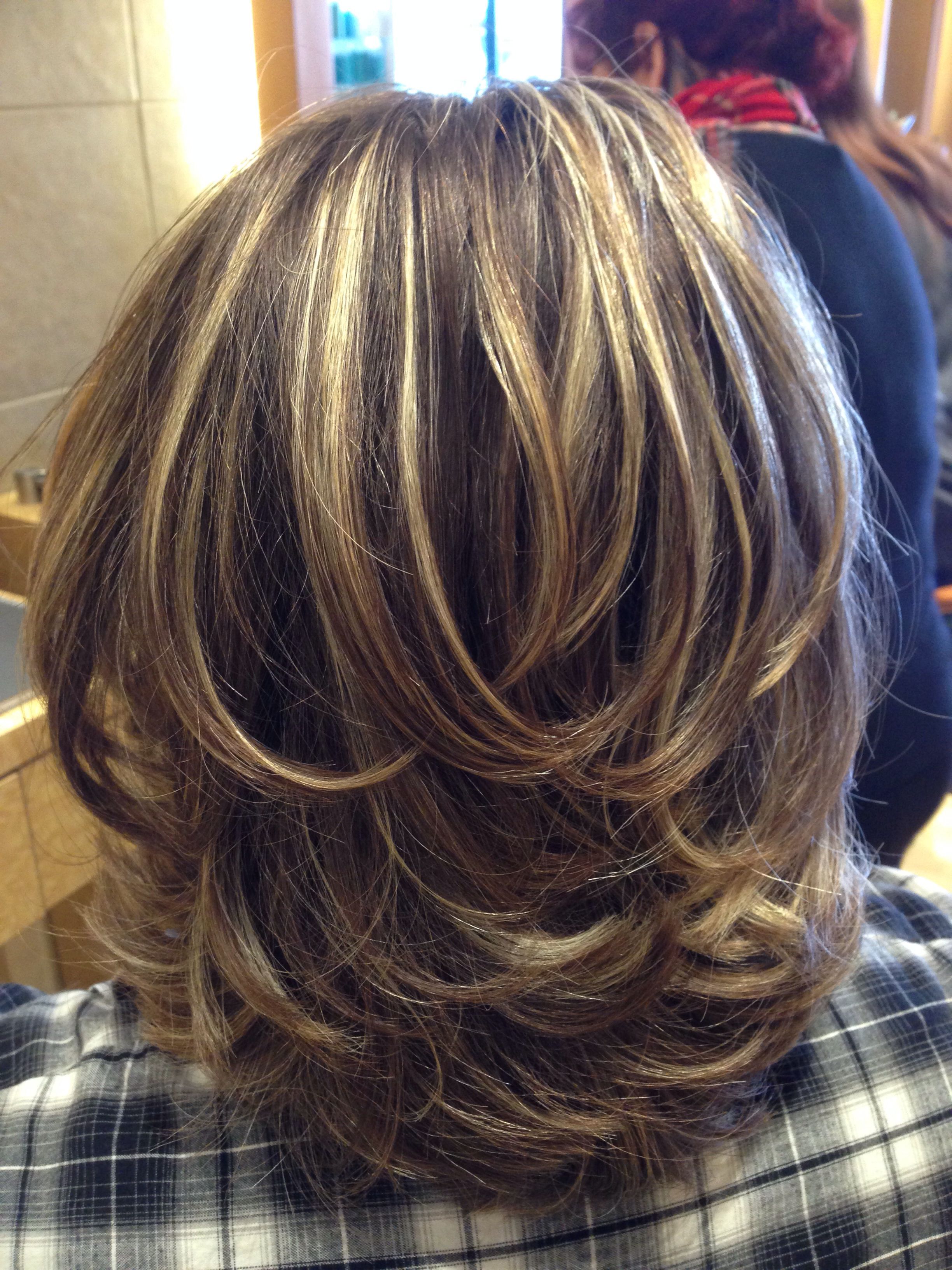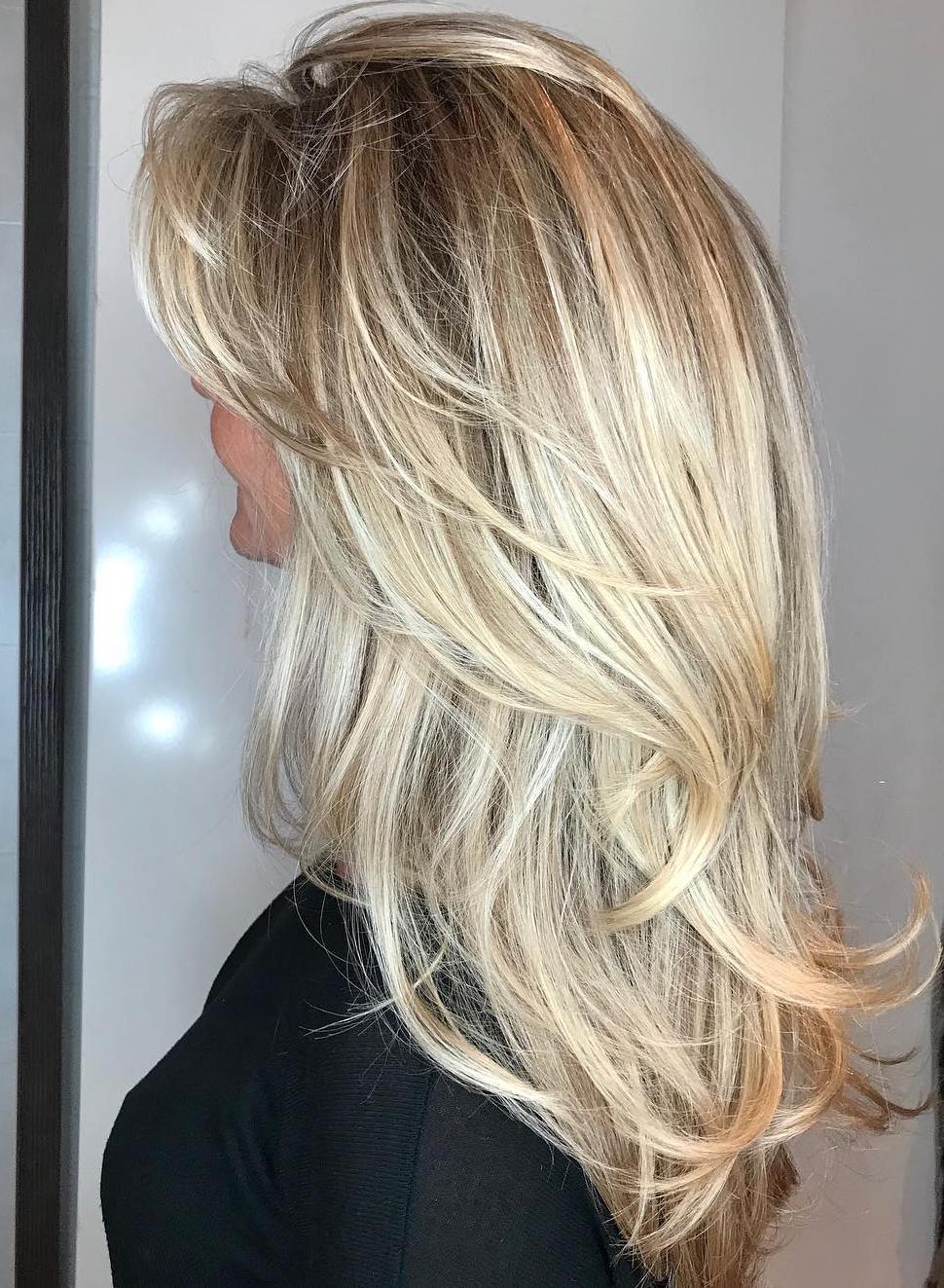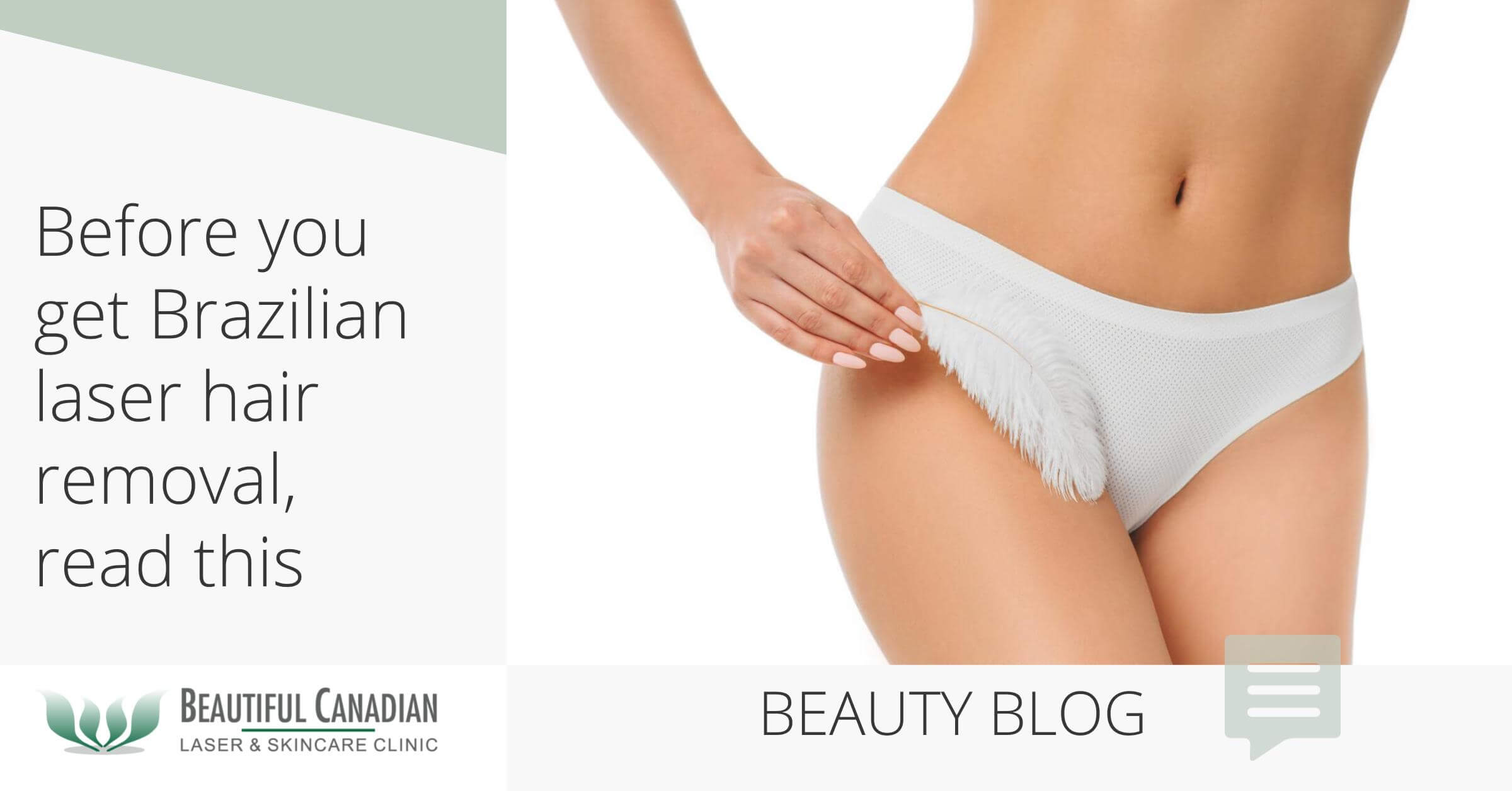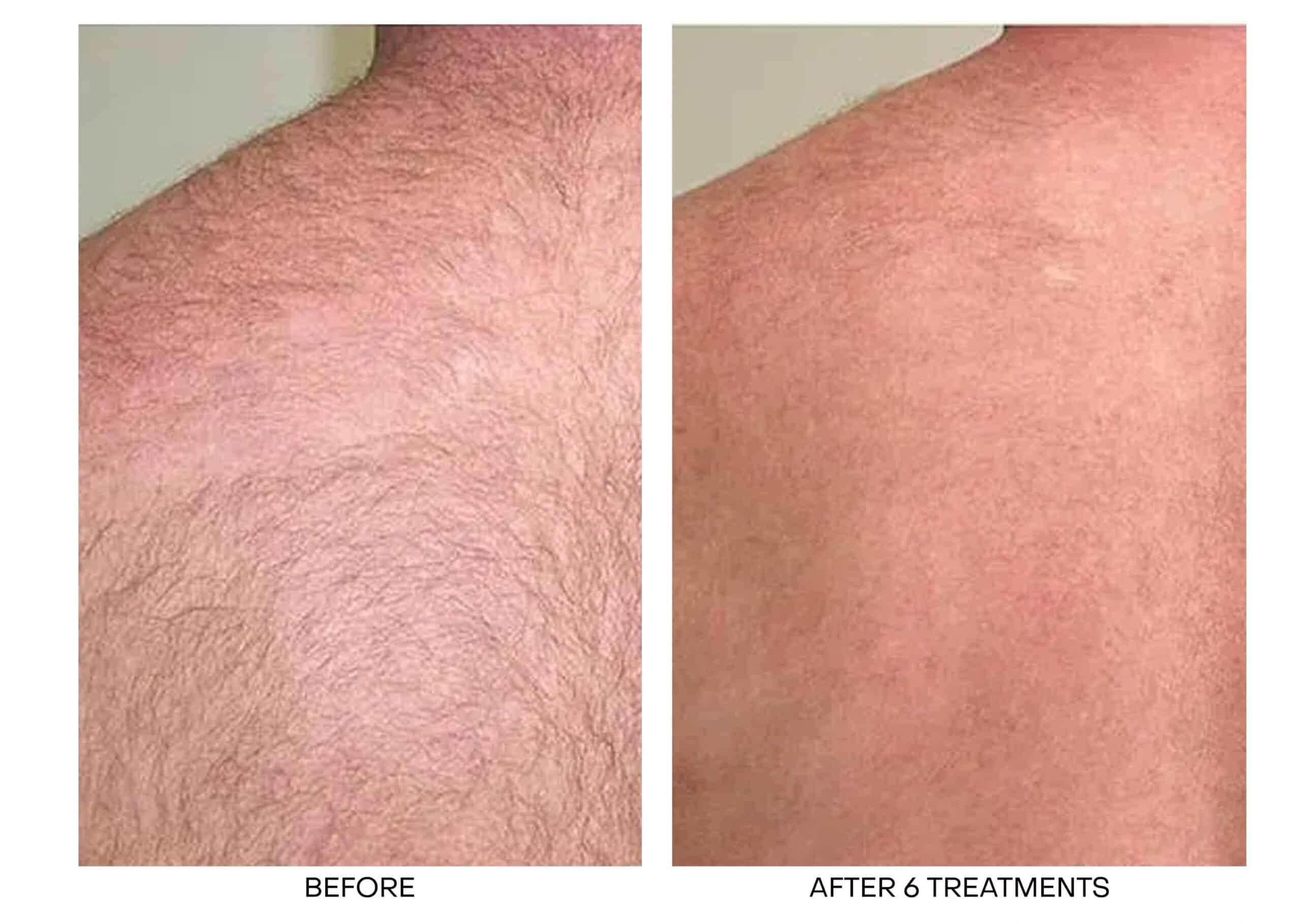Table Of Content

Layered bob haircuts with bangs are great for adding movement and texture to your look. There are a number of different types of bobs that you can try, so make sure to consult with your hairstylist. The C-shape haircut was super popular in the '90s and is making a comeback. It's one of our favorite layered haircuts because the style works on all hair lengths, but we especially like it as a short-medium layered haircut. It adds volume and body to hair thanks to cuts that start at chin length and curve inward.
Cutting Hair in a Ponytail
So make sure your hair has been recently washed and is free of all products.
Naturally Curly Short Hair: Wolf Cut
Velasquez says that shaggy layers are a great way to give natural curls movement and life. This cut also removes any heaviness that may way your curls down. Roszak and Kim agree that long layers are key, as you don’t want to remove that much bulk in fine long hair. “Keeps the appearance of fullness and gives you a lot of lift at the same time,” says Kim. To make it more dynamic, Roszak recommends adding the classic Jane Birkin Fringe bangs. Roszak says to match your medium-length hair with medium (or even short) layers.
How to Cut Hair: Triangle Sections and Longer Layers - American Salon
How to Cut Hair: Triangle Sections and Longer Layers.
Posted: Tue, 25 Jul 2023 07:00:00 GMT [source]
Long Layers: 10 Pro Tips + Common Cutting Mistakes
Slide cutting will give you a perfectly imperfect gradation as a base for your face-framing layers. Use your cutting comb to direct all the hair forward, over your face, and pinch out one tiny subsection at a time, each beneath the other. Taking small subsections and a gentle approach with this cutting method will give you the most control over what you're doing as a beginner. For this particular cut, I suggest a method called slide cutting.
At this point, you may also need to use the spray bottle to keep your hair damp. Feel free to get creative with your back layers, adding a few different lengths. Layering the backside of your head is always the trickiest for obvious reasons—you’ll need to rely on a second mirror to see what you’re doing. When cutting your back layers, make sure the layers are as long or longer than your side layers. That way, you’ll achieve a layered look while ensuring your hair maintains plenty of body.
When you have thick hair, the layering options are virtually endless. “Thick hair is a good candidate for most layers,” Toves-Vincilione says. “Long layers, butterfly layers, and really any round layered haircut is ideal.” When working with thick hair, though, he says to be mindful of the length of your layers. “The goal is to not go too short with the layers (as layers add volume) but create movement that blends and shapes the hair,” he reveals.
Consultation Questions To Ask Before Cutting Layers
So, we recommend taking a photo of yourself and, on your laptop, marking the areas where you want to layer to help you achieve your ideal look. The great—and intimidating—thing about layers is that there’s a near-endless way you can arrange them. To choose shears that are a good length for you, you should find a blade that’s approximately the length of your middle finger. From there, the handle part should fit comfortably in the palm of your hand. By following the steps below, your family and friends just might start lining up asking you to layer their hair.
The 9 Best 2024 Haircut Trends — See Photos - Allure
The 9 Best 2024 Haircut Trends — See Photos.
Posted: Tue, 28 Nov 2023 08:00:00 GMT [source]
Once your guide is cut in the center, return to your natural parting and let that starting point guide you down to other tiny subsections on each side. While cutting one side will always feel more natural, slide cutting prevents the other side from feeling extremely foreign and more prone to significant mistakes. To blend layers in your hair, keep your scissors pointed at an angle rather than cutting your hair horizontally. Blended layers typically involve cutting more hair to achieve a blended look. Arguably, the most important aspect of cutting layers in hair isn’t the way you cut them but the quality of the scissors you use. So, no, you should never use the scissors sitting in your junk drawer.

If you want an easier (but less precise) method than what we described above, you can make a ponytail on the crown of your head. Then, place a hair tie towards the end of your ponytail and snip off the hair horizontally. Then, use a comb to part your hair in the middle and check that the layers are even.
If you notice unevenness, carefully make any trim adjustments needed. You’ll want to work with a clean head of hair when cutting layers. Otherwise, grease and dirt could interfere with the quality of your cut.
However, keep in mind that your hair will shrink after it dries. You won’t be touching the hair underneath the back section of your head. So, gather the top section of your hair at the back of your head and clip it. Research shows that layers in hair help give people personal expression as well as them being an indication of regional trends. Júnior works with ARC™ Scissors 7” PARAGON II to achieve fresh layers without harsh lines.
Parting hair evenly, clipping hair back tightly and carefully combing through hair is crucial for this precise cut. A good rule of thumb is to start your shortest layer below the earlobe or jawline, depending on the length of your hair. You may even want to begin your layers at the shoulder if you have long hair.
Otherwise, a regular trim is more than enough to keep the shape and layers sharp. Ultra-straight hair can be layered, however, they often require more styling to make them look cohesive. “This needs to be cut with skill so there aren’t any unintended chops. After you know the front is looking good, it's time to bring the back forward and see how it all blends.














